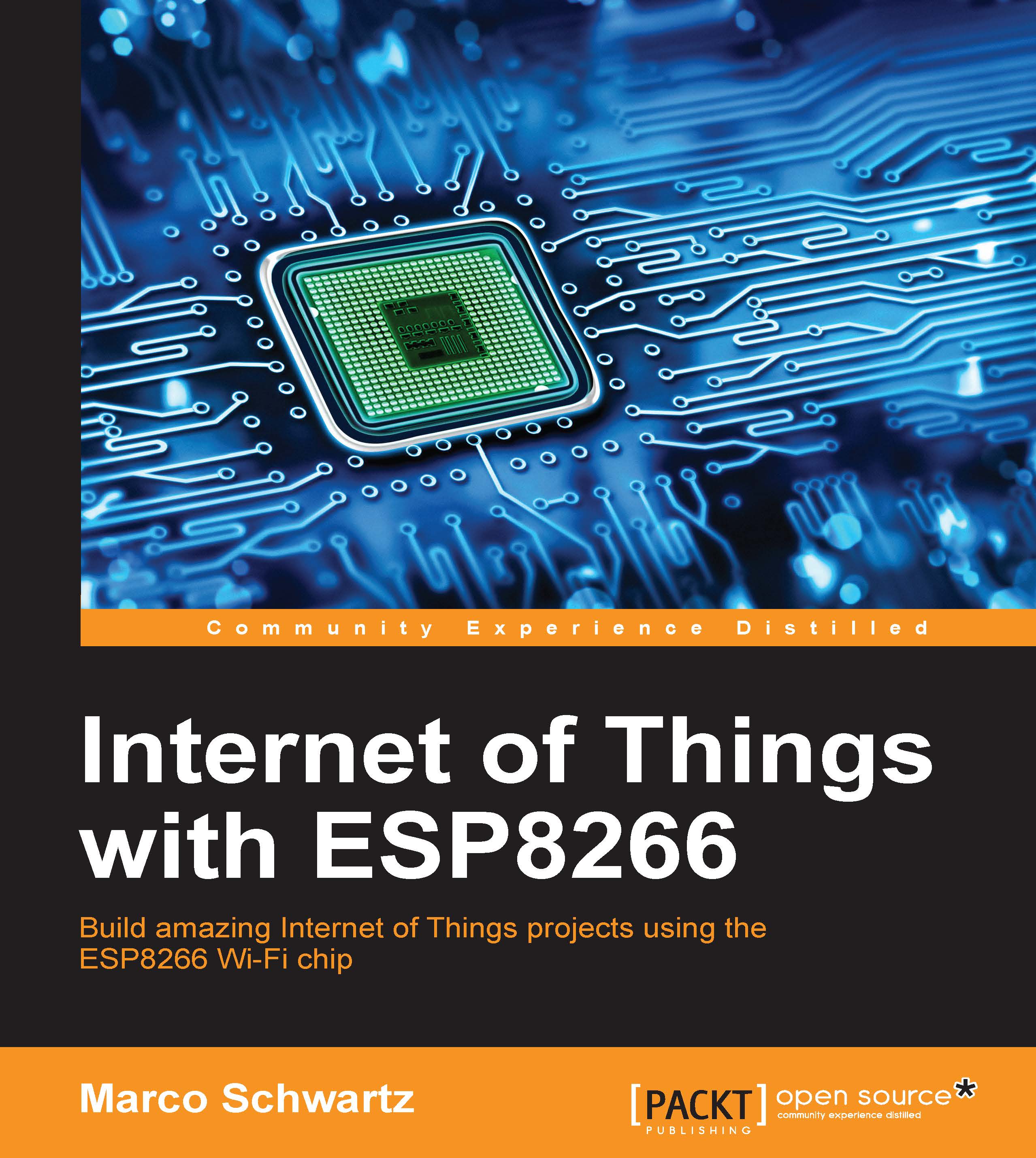Hardware and software requirements
Let's first see what we need for this project. As we just want to test the connection between an ESP8266 board and your own cloud server, we'll keep things simple here.
For the ESP8266, I again chose to use an Adafruit ESP8266 module, along with an FTDI USB module.
We'll simply connect two kinds of component to this board: an LED and a DHT11 sensor.
Of course, you'll need the usual breadboard and jumper wires.
This is a list of all the components that will be used in this chapter:
Adafruit ES8266 module (https://www.adafruit.com/products/2471)
FTDI USB module (https://www.adafruit.com/products/284)
330 Ohm resistor (https://www.sparkfun.com/products/8377)
DHT11 sensor (https://www.adafruit.com/products/11)
Breadboard (https://www.sparkfun.com/products/12002)
Jumper wires (https://www.sparkfun.com/products/9194)
On the software side, you will need the Arduino IDE and the aREST library, which we have already used earlier in...
























































